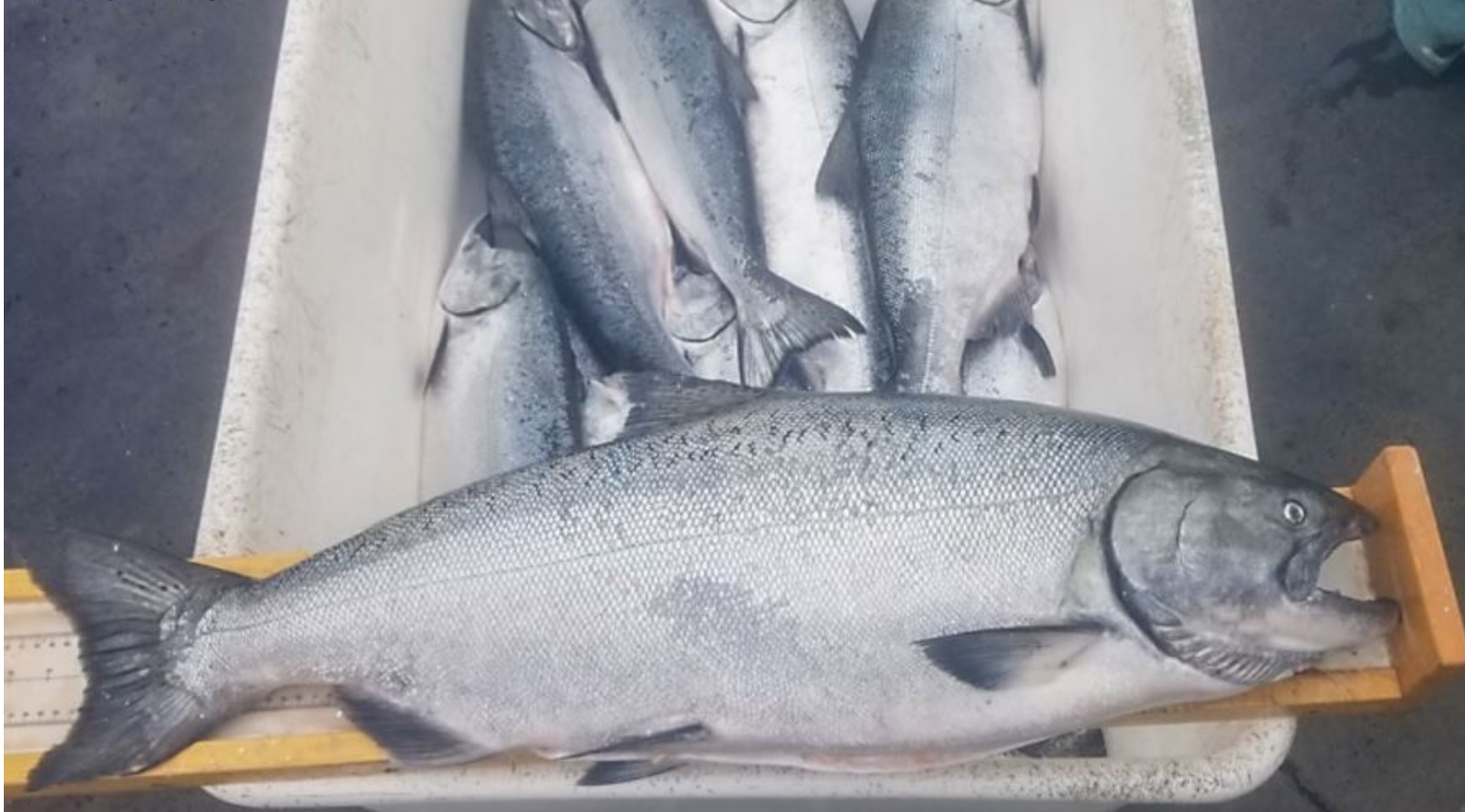With more bad news forecast for California salmon, several fishing advocacy groups called Friday for the state to impose an immediate closure of the 2023 salmon season and seek federal assistance for a fishery disaster.
In a joint statement the Pacific Coast Federation of Fishermen’s Associations, the Golden Gate Fishermen’s Association, and the Northern California Guides and Sportsmen’s Association said Gov. Gavin Newsom with the state legislature and agencies must ask for “disaster assistance funding for affected ocean and inland commercial operators.”
The California Department of Fish and Wildlife held its annual pre-season briefing March 1 “and reported some of the worst fisheries numbers in the history of the state. These numbers follow years of drought, poor water management decisions by federal and state managers, occasional failure to meet hatchery egg mitigation goals, inaccurate season modeling, and the inability of fisheries managers to meet their own mandated escapement goals,” the fishing groups said.
“Unfortunately, we have gotten to a point that we have been warning was coming; another collapse of our iconic salmon fisheries”, said George Bradshaw, president of the Pacific Coast Federation of Fishermen’s Associations. “The harvest models, escapement goals and model inaccuracies show there is no warranted opportunity to harvest chinook salmon in the state of California in 2023.”
At the annual Salmon Information Meeting held virtually Feb. 27, state and federal fishery scientists said the 2023 projection for Sacramento River fall chinook, the most predominant stock in California fisheries, is estimated at 169,767 adults, “one of the lowest forecasts since 2008 when the current assessment method began.”
For Klamath River fall chinook the forecast is 103,793 adults, the second lowest forecast since the current assessment method began in 1997. They are not the worst numbers ever; in 2009, the Sacramento forecast was 122,200 and in 2017, the Klamath forecast was 54,200.
“After several consecutive years of poor river conditions fishery managers have forecasted near record low salmon returns to the Sacramento and Klamath Rivers”, said Rick Powers, president of the Golden Gate Fishermen’s Association.
“With low returns we feel it would be irresponsible to participate in a 2023 season. While we make our living fishing for salmon, we are willing to make a short-term sacrifice to ensure a return of robust salmon populations that our families depend on,” said Powers. “Therefore, we suggest that this year's salmon season be suspended to protect the salmon runs that are vital to California Coastal Communities, and we call for Governor Newsom and state leaders to fight for disaster assistance funding for our communities immediately.”
California state officials said salmon numbers are “episodic over time and life cycles, which is generally a three year period from birth as eggs hatching to returning adults from the ocean. For example, in 2022 ocean commercial catch was considerably greater than preseason expectations.”
They also suggest that California’s bout of wet and even snowy winter weather could bring better news to come on salmon.
“The data also indicates in years following wetter hydrologic years that abundance is higher,” according to a summary from the Department of Fish and Wildlife. “For example, the 2010 above average rainfall year resulted in higher stock forecasts of California adult Chinook in 2012 and 2013.
“Conversely drier years regularly result in lower abundance three years later. Three years ago, in 2020, conditions were particularly severe with drought.”
“This is a decades-long trend, and the past few years of record drought only further stressed our salmon populations,” said Charlton H. Bonham, director of the CDFW. “Unfortunately, low stock abundance is somewhat expected despite protective and restorative actions California has taken to increase hatchery production, improve release strategies, and increase the availability of critical spawning and rearing habitats.”
Farming, public water supply and fisheries are all intensely competing demands for the water in salmon watersheds. California wildlife officials see a silver lining in recent wild winter weather. The salmon season will be debated in April meetings and a decision issued by early May.
“The current wetter weather in California is good news. Relatively higher returns in 2019 and 2020 may help boost the number of spawning adults returning to the Sacramento Basin in 2023, as fish hatched in 2019 and 2020 will be returning this year,” the state agency says.
“Even though this boost will be moderated by evolving ocean conditions and ongoing climate disruption, there are bright spots and reasons for caution heading into 2023 and beyond.”







